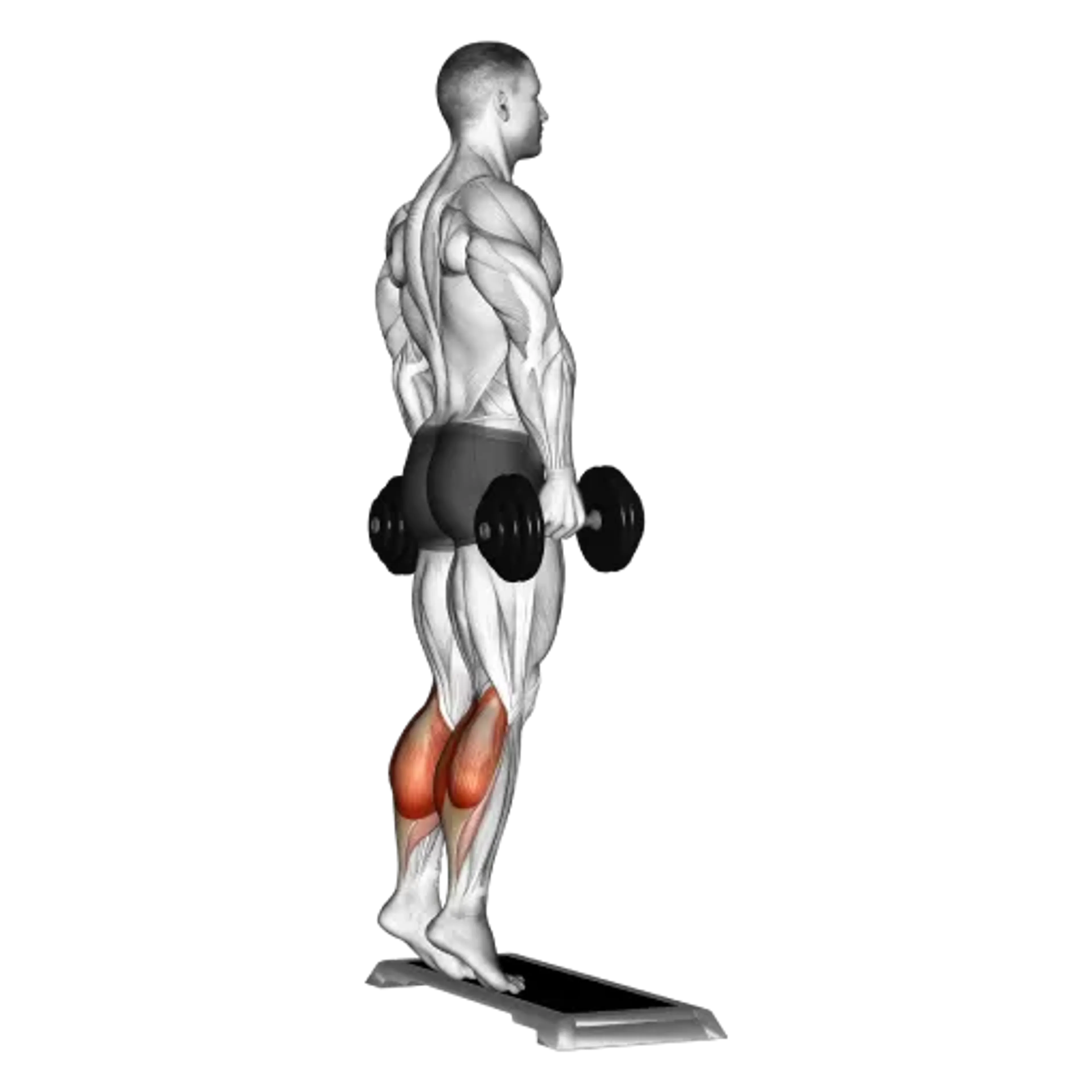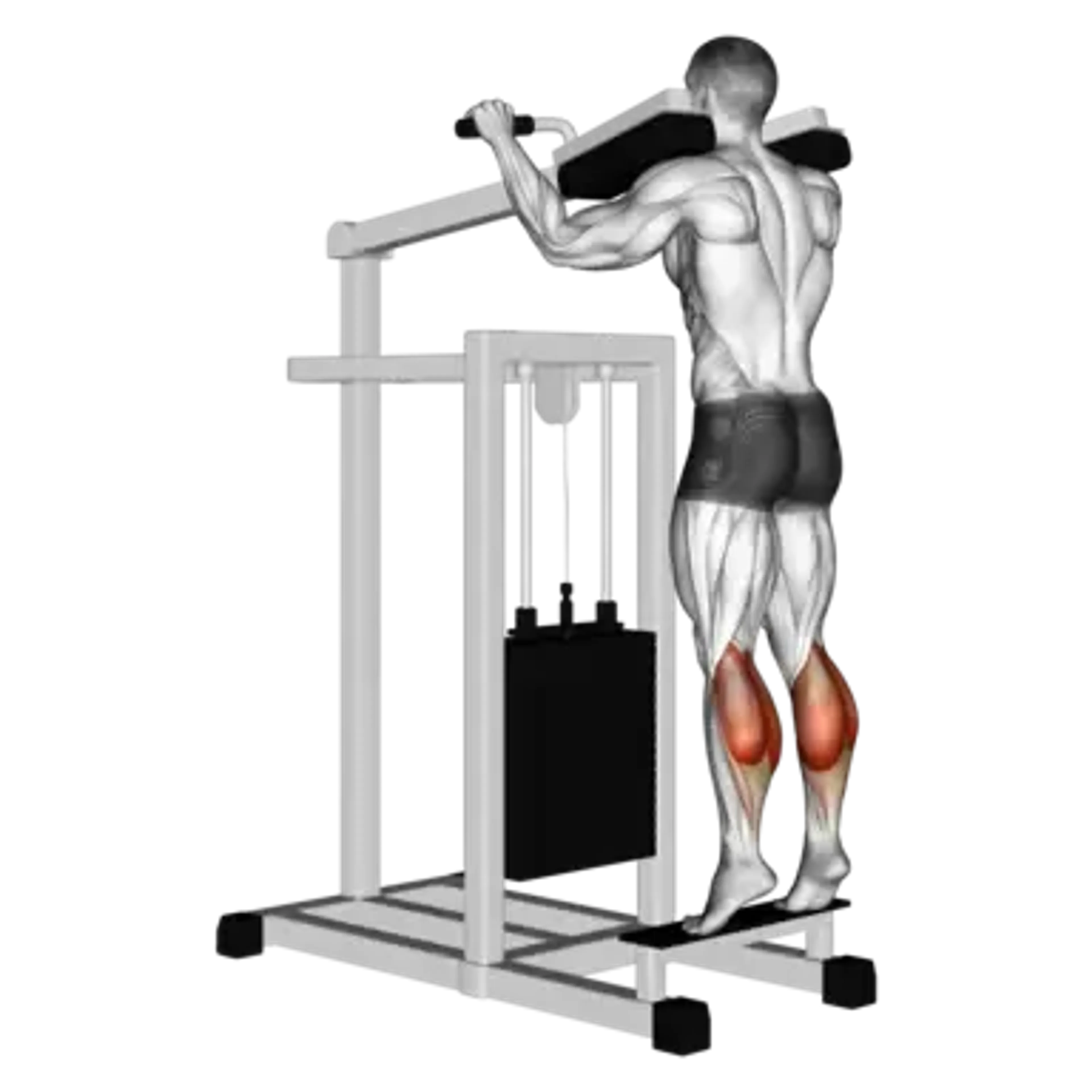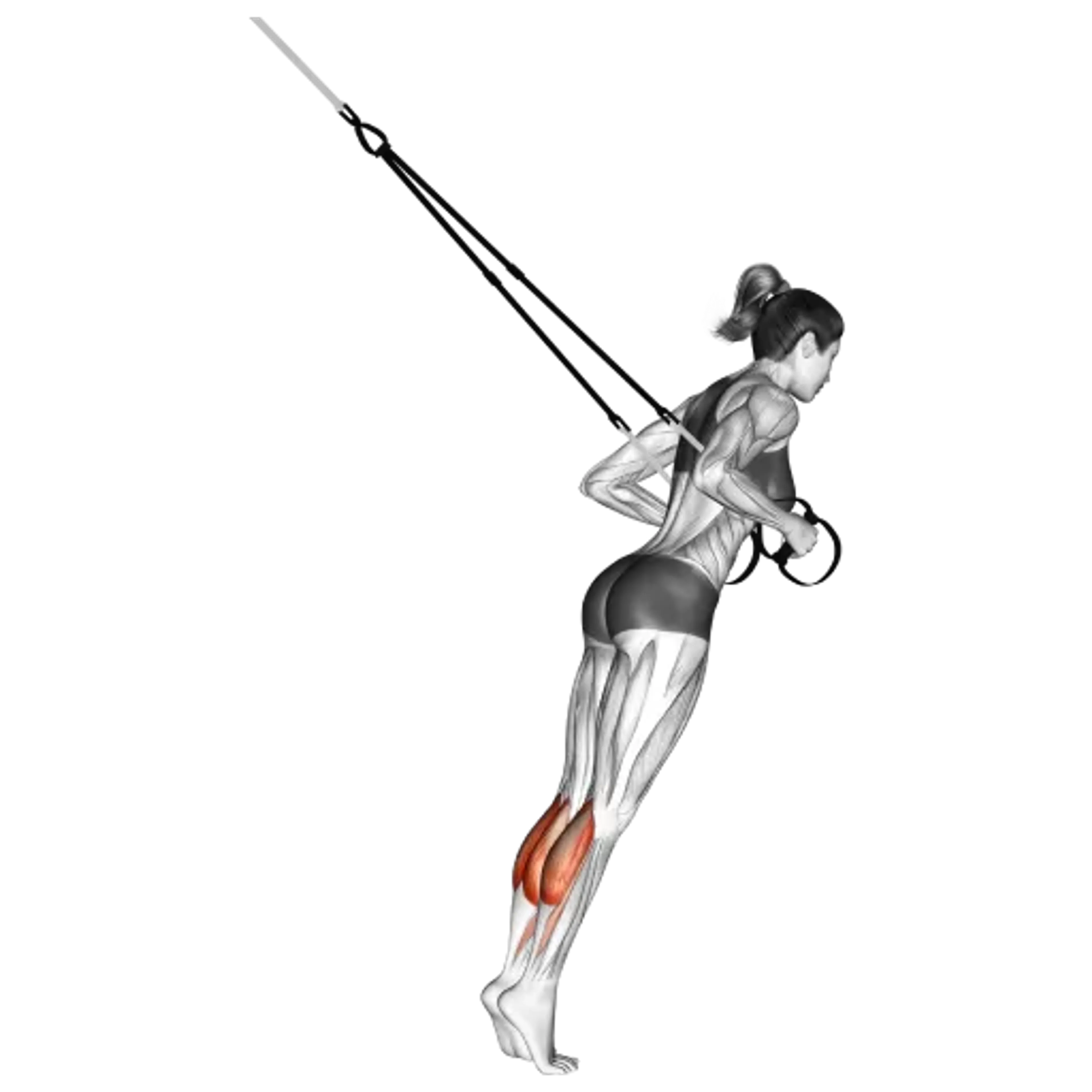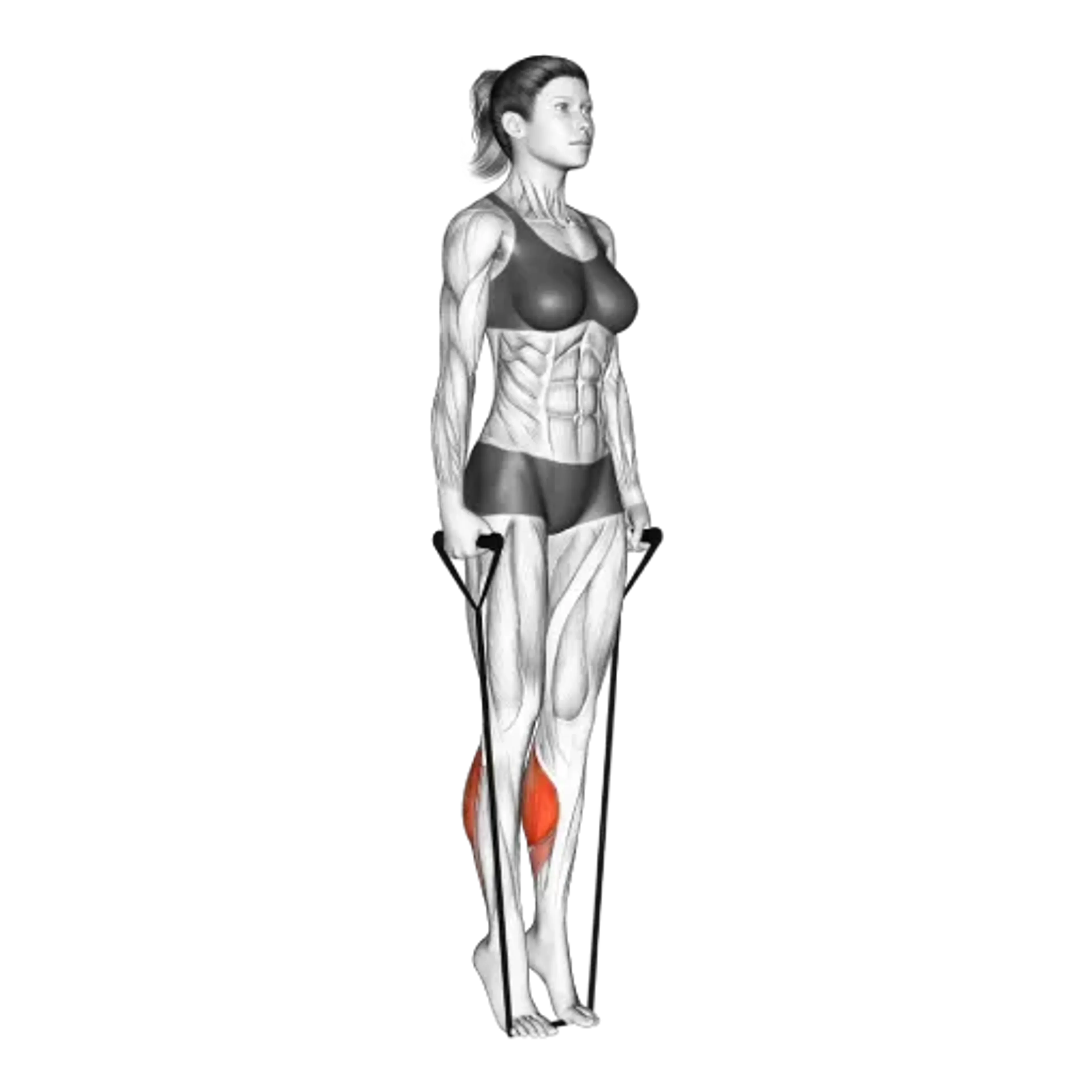Bodyweight Calf Raise
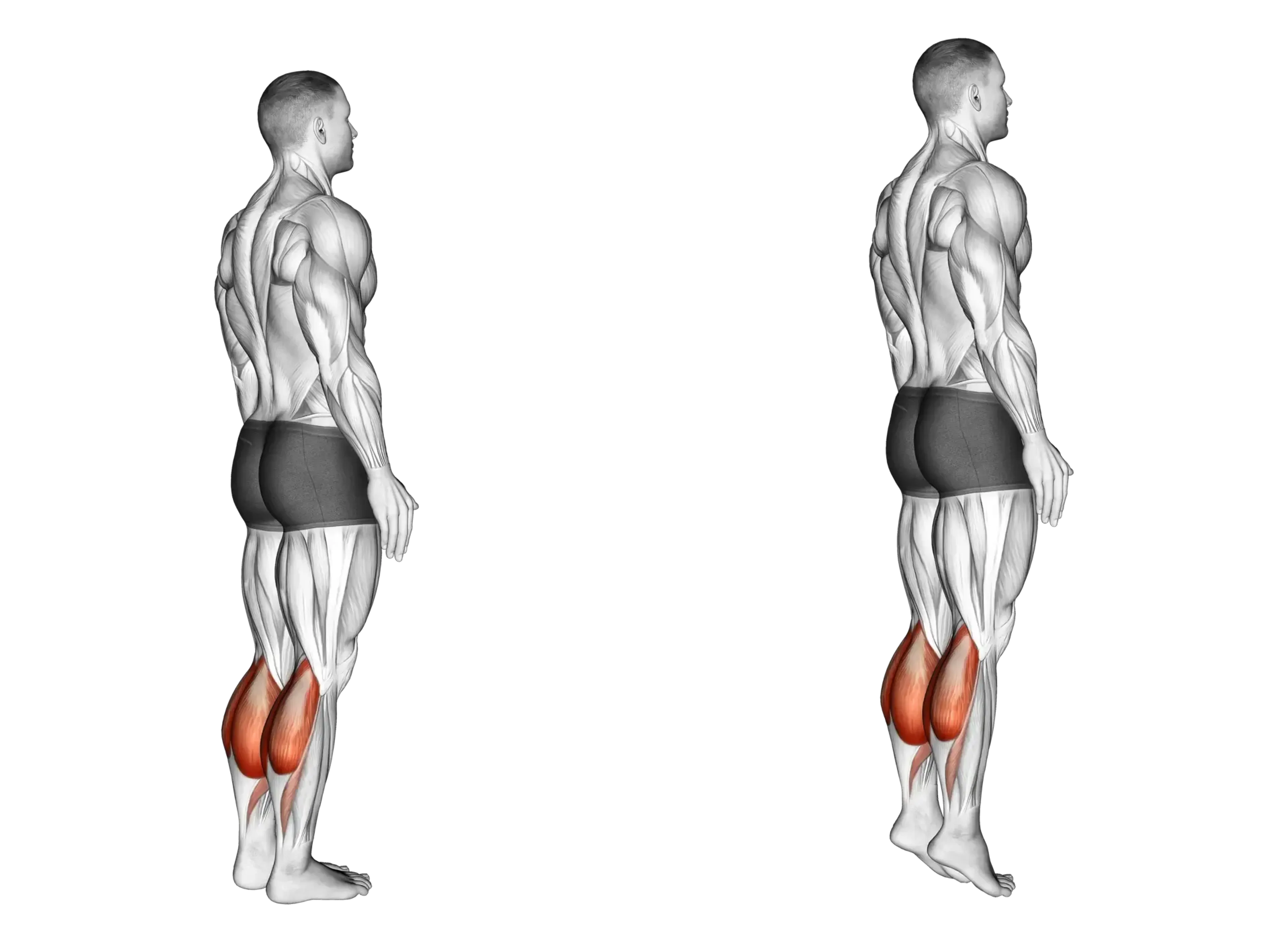
Overview
- Primary Focus:
- Calves.
- Equipment:
- Body weight.
- Difficulty:
- Beginner.
General Information
Bodyweight Calf Raise is an isolation exercise that targets the calves, specifically the gastrocnemius and soleus muscles. It is a beginner-friendly exercise that requires no equipment, making it ideal for home workouts or warm-up routines.
This exercise helps improve lower leg strength, endurance, and balance. It is commonly used by athletes, runners, and general fitness enthusiasts to enhance performance and reduce the risk of lower leg injuries.
While bodyweight calf raises are effective on their own, they can be progressed by performing them on an elevated surface (such as a step) for a deeper stretch or by adding resistance like dumbbells or a weighted vest.
Muscles Worked
- Gastrocnemius (Lateral Head)
- Primary
- Gastrocnemius (Medial Head)
- Primary
- Soleus
- High
- Peroneus Longus
- Medium
Instructions
- Stand upright with your feet hip-width apart.
- Keep your core engaged and maintain a neutral spine.
- Push through the balls of your feet and raise your heels as high as possible.
- Hold the top position for a second to maximize the contraction.
- Slowly lower your heels back down to the starting position.
- Repeat for the desired number of reps.
Common Mistakes
Injuries
Bodyweight Calf Raise is a low-risk exercise when performed correctly. However, improper form or excessive volume can lead to minor discomfort or strain.
- Achilles Tendon Irritation – Rapid or excessive repetitions may put stress on the Achilles tendon. Perform slow, controlled movements to prevent strain.
- Ankle Instability – Poor balance can increase the risk of rolling an ankle. Engage your core and perform the exercise near a stable surface for support if needed.
- Calf Tightness – Overworking the calves without proper stretching can cause tightness. Stretch your calves after exercise to maintain flexibility.
To reduce injury risk, avoid bouncing, ensure proper alignment, and listen to your body if discomfort occurs.
Alternative Exercises
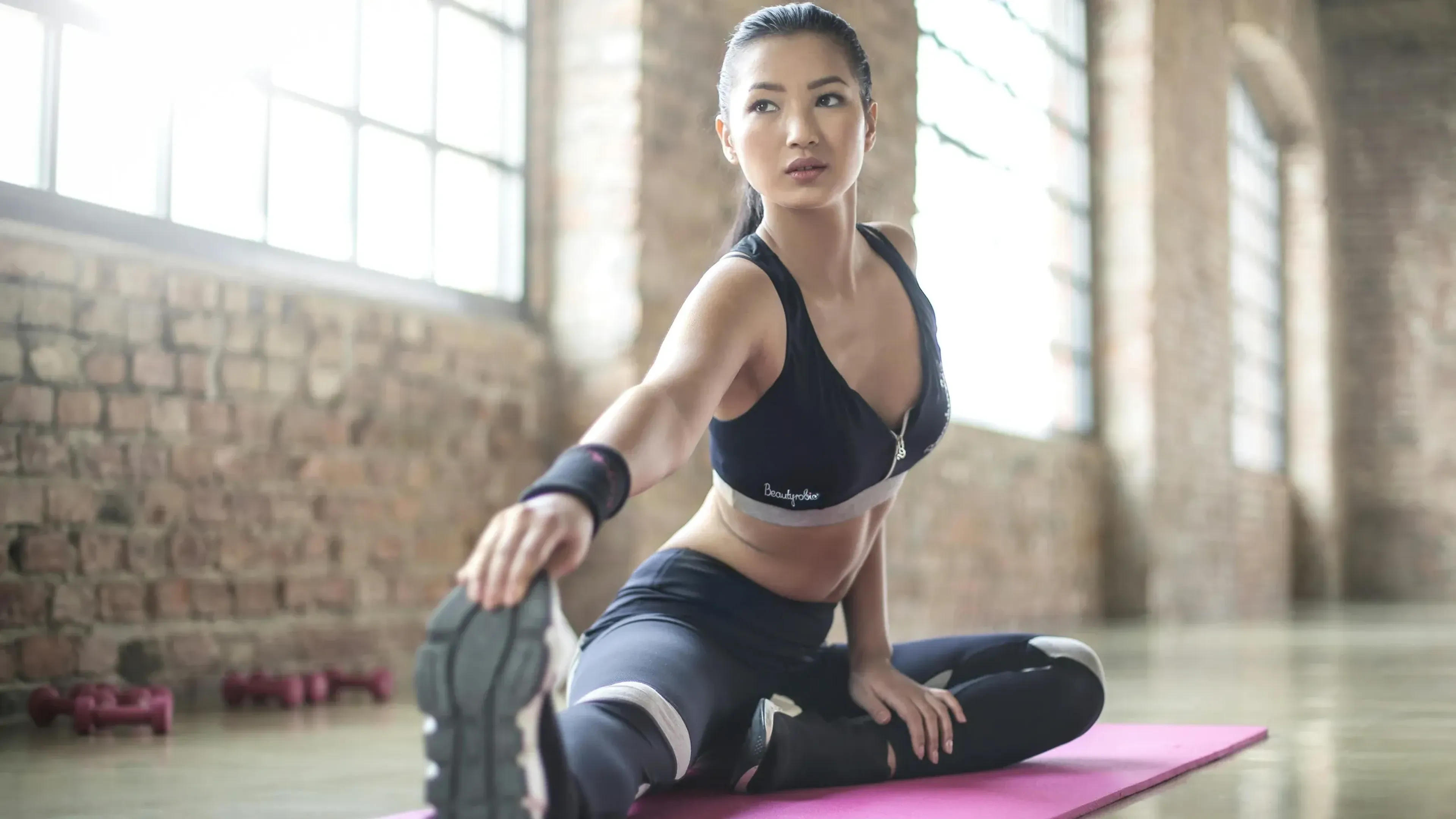
Frequently Asked Questions
- Q: Can I do this exercise every day?
Yes, but allow for rest if your calves feel excessively sore.
- Q: How many reps should I do?
15-25 reps per set is ideal for endurance and muscle activation.
- Q: Is this exercise effective for building muscle?
It helps strengthen and tone the calves, but adding resistance is recommended for muscle growth.
Overview
- Primary Focus:
- Calves.
- Equipment:
- Body weight.
- Difficulty:
- Beginner.
